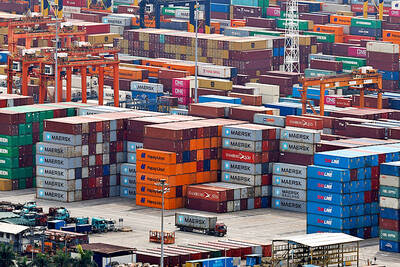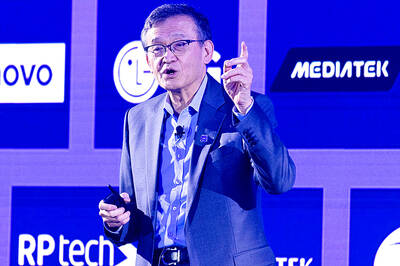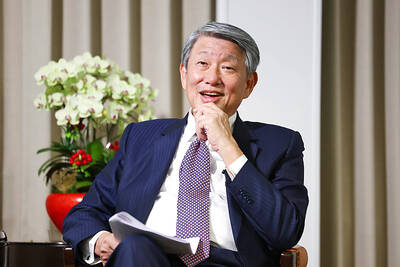A Japanese firm began accepting reservations yesterday for couples who really want to make the big leap — by blasting into space to exchange their wedding vows.
Each happy couple will spend ¥240 million (US$2.3 million) for the ceremony in a small space vessel, which will shoot up 100km into the sky.
During the hour-long flight, the couple will spend several minutes in zero gravity during which they will exchange their vows with up to three guests present, said Taro Katsura, a spokesman for Japanese firm First Advantage.
The couple would perform most of the ceremony before takeoff “so that they can say their vows and look out the window,” Katsura said.
The company is offering the space marriages in a tie-up with US-based Rocket Plane, which will conduct the flights from a private airport located in Oklahoma.
From the spaceship, the couple would probably be able to see the outline of the Earth, although they would not be far enough into space to allow complete floating, Katsura said.
Despite launching the offer in Japan, the company said it expected most of its customers to be from China or Arab Gulf countries.
There are no plans to start the space weddings in the US, Katsura said.
Space tourism has been seeing a boom of sorts since 2001, when American millionaire businessman Dennis Tito paid US$20 million to Russia’s space agency to become the first person to pay his own ticket into space.

Nvidia Corp CEO Jensen Huang (黃仁勳) today announced that his company has selected "Beitou Shilin" in Taipei for its new Taiwan office, called Nvidia Constellation, putting an end to months of speculation. Industry sources have said that the tech giant has been eyeing the Beitou Shilin Science Park as the site of its new overseas headquarters, and speculated that the new headquarters would be built on two plots of land designated as "T17" and "T18," which span 3.89 hectares in the park. "I think it's time for us to reveal one of the largest products we've ever built," Huang said near the

China yesterday announced anti-dumping duties as high as 74.9 percent on imports of polyoxymethylene (POM) copolymers, a type of engineering plastic, from Taiwan, the US, the EU and Japan. The Chinese Ministry of Commerce’s findings conclude a probe launched in May last year, shortly after the US sharply increased tariffs on Chinese electric vehicles, computer chips and other imports. POM copolymers can partially replace metals such as copper and zinc, and have various applications, including in auto parts, electronics and medical equipment, the Chinese ministry has said. In January, it said initial investigations had determined that dumping was taking place, and implemented preliminary

Intel Corp yesterday reinforced its determination to strengthen its partnerships with Taiwan’s ecosystem partners including original-electronic-manufacturing (OEM) companies such as Hon Hai Precision Industry Co (鴻海精密) and chipmaker United Microelectronics Corp (UMC, 聯電). “Tonight marks a new beginning. We renew our new partnership with Taiwan ecosystem,” Intel new chief executive officer Tan Lip-bu (陳立武) said at a dinner with representatives from the company’s local partners, celebrating the 40th anniversary of the US chip giant’s presence in Taiwan. Tan took the reins at Intel six weeks ago aiming to reform the chipmaker and revive its past glory. This is the first time Tan

CUSTOMERS’ BURDEN: TSMC already has operations in the US and is a foundry, so any tariff increase would mostly affect US customers, not the company, the minister said Taiwanese manufacturers are “not afraid” of US tariffs, but are concerned about being affected more heavily than regional economic competitors Japan and South Korea, Minister of Economic Affairs J.W. Kuo (郭智輝) said. “Taiwan has many advantages that other countries do not have, the most notable of which is its semiconductor ecosystem,” Kuo said. The US “must rely on Taiwan” to boost its microchip manufacturing capacities, Kuo said in an interview ahead of his one-year anniversary in office tomorrow. Taiwan has submitted a position paper under Section 232 of the US Trade Expansion Act to explain the “complementary relationship” between Taiwan and the US